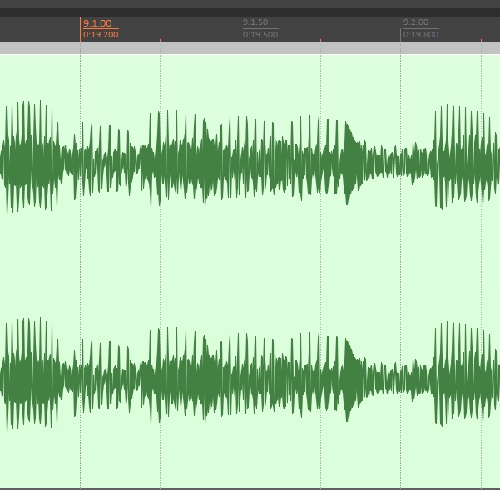When it comes to producing modern rock genres, the industry, and audience expectations lean towards a very polished sound for the songs and perfected guitar performance as a part of them!
Because the wall of guitar sound that organically works with the rest of the arrangement and drives the entire song is what makes people stuck listening to such music.
This is why manual editing of guitar records has become a big part of rock music production. The aim is to fix natural imperfections that every human performance has.
In simple words, it means making every guitar chord, and every note work as tight as possible with the rest of the elements of the song. Primarily with DRUMS as another focal element of the song!
Before getting to editing guitars, make sure the drums already sound the way you want them rhythm-wise.
I’m not necessarily talking about 100% quantizing drums and making them machine-like even!
I think it’s worth keeping a bit of looseness, a human feel on them. Just make sure to get rid of sloppiness, which prevents the energy of drum performance.
So, when you’re happy with the drums performance, you can get to perfecting guitars. Make sure every chord, and every note is in perfect sync (or very close to it) with the drum hits.

And here you go the very first tip
Working with DI guitars makes the process much easier and eventually much more precise. Because guitar DI’s show more detail – you can literally see with your eyes where the notes on the grid are and fix them way more precisely.
DI guitars are 100% raw guitar records, with no amps, cabinets, or any other processing applied. They are just a clean, raw signal that comes out of the guitar before hitting any FX or distortion pedal, processor, or guitar ampsim.
Getting back to the subject – guitars timing editing.
There are two well-known techniques for that:
- slicing guitar tracks into pieces where every piece contains just one chord/note. And then shifting these pieces on the grid to position them where you want.
- a more advanced and time-saving technique – Audio Warping. Every professional DAW has the tools to perform it.
The idea is that the software automatically detects transients in the track (this is where DI tracks are a huge help!) and inserts stretch markers on them. And you can easily stretch audio and position guitar notes where you want by shifting the markers.
The other thing worth keeping in mind is background noises in the pauses, slightly audible frets noises, and the sound of fingers touching the strings. Being processed with high gain distortion these sounds getting way too audible and annoying! So it’s strongly recommended to cut these parts out not to distract listeners from the guitar performance.
Sure thing there is also a sort of automatic solution to that – gate pedals or gate software.
It’s just in some spots gate can miss unwanted parts, while rising the gate threshold can cut off the chords' endings and make them sound unnatural.
So first of all make sure the gate threshold is set at the level where the guitar sounds full and natural. Afterward go through the tracks and revise if there are noise parts that weren’t detected by the gate and cut the out manually.
